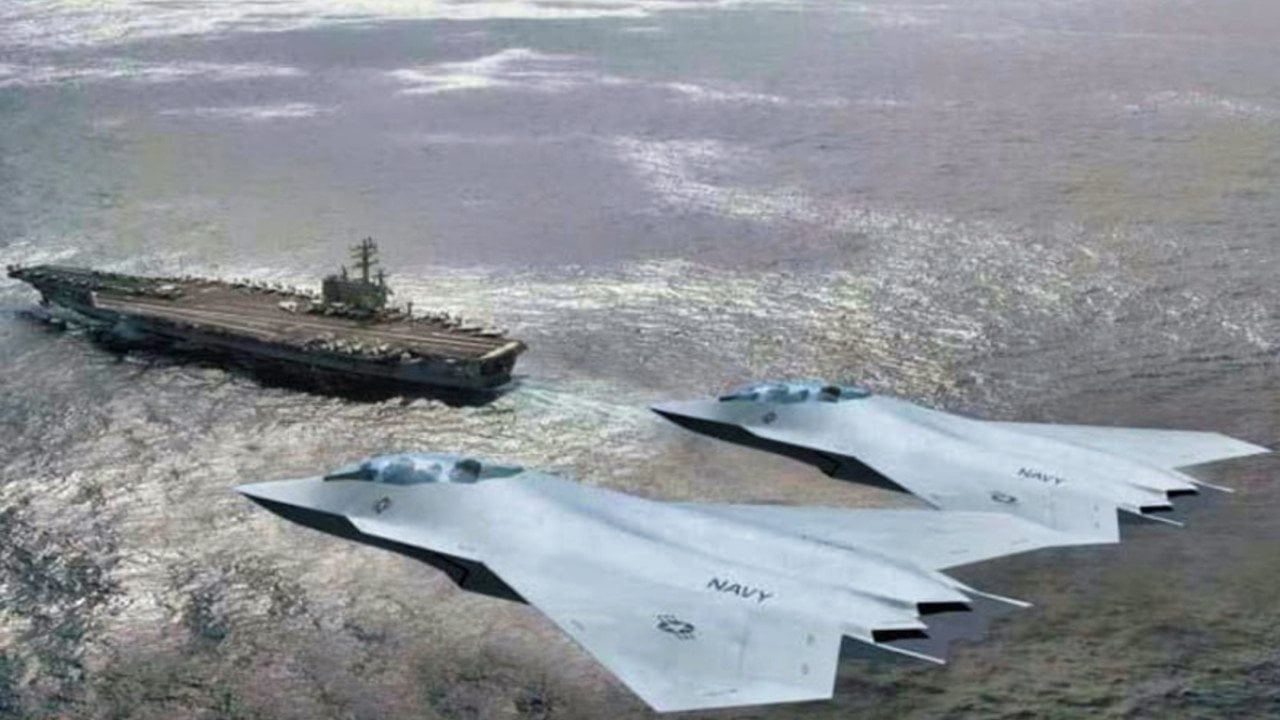
F/A-XX: The Navy Could Beat the Air Force’s NGAD 6th Generation Fighter Into the Sky
What You Need to Know: The U.S. Navy appears poised to field the first sixth-generation fighter or F/A-XX, potentially outpacing the Air Force’s delayed Next Generation Air Dominance (NGAD) program.

-The Navy’s F/A-XX program, set to replace the F/A-18 Super Hornet and E/A-18 Growler by the early 2030s, aims to integrate advanced sensors, greater range, and capabilities for both manned and unmanned operations.
-Despite budget challenges, the Navy remains committed to the development of its next-generation platform, with plans for collaboration across branches to streamline technologies like advanced propulsion systems.
U.S. Navy Could Operate the First Sixth-Generation Fighter
It is increasingly looking as if it will be the United States Navy, not the United States Air Force that could adopt the first sixth-generation fighter aircraft. The sea service is continuing to move forward while the air service has recently put a pause on its program, citing its cost and effectiveness.
Air & Space Forces magazine reported this week that the U.S. Navy will continue the development of its F/A-XX next-generation carrier-based fighter, which could enter service by the early 2030s.
“We expect that sixth-generation platform to be able to have advanced sensors, advanced lethality, advanced range, and being able to integrate with manned and unmanned capabilities together,” said Chief of Naval Operations Adm. Lisa Franchetti.
“That’s one of the things, as we learn from the Air Force and the work they’re doing, to integrate that with what we know that we need to be able to do,” the sea service’s second-highest ranking official, told reporters this week at the Defense Writers Group event, and added, “We have three companies that have provided proposals for that and we’re actually in source selection right now.”

The future aircraft would replace the U.S. Navy’s Boeing F/A-18 Super Hornet multirole carrier-based fighter and the Boeing E/A-18 Growler electronic warfare (EW) attack aircraft. In addition, the U.S. Navy has called for the F/A-XX to have greater range and EW capabilities than the Lockheed Martin F-35C Lightning II, the carrier-based variant of the Joint Strike Fighter.
Battle of Budgets
As previously reported, Air Force officials have expressed repeated concerns over the costs of its Next Generation Air Dominance (NGAD) program, which calls for the development of a system of systems that will include a sixth-generation manned fighter and unmanned aerial systems (UAS). The NGAD would replace the aging Lockheed Martin F-22 Raptor fifth-generation air superiority stealth fighter.
Lockheed Martin and Boeing were both named as the two main contenders in the program after Northrop Grumman dropped out, but last month there was speculation the latter company could reenter the NGAD program.
While the Air Force has essentially pressed pause over the costs, which could be as high as $200 million to $300 million per aircraft, the U.S. Navy has sought to press on, but it also deferred around a billion dollars in F/A-XX funding earlier this year while focusing on immediate readiness of its warships and aircraft. Congressional lawmakers could further cut the F/A-XX’s funding – but not so much as to put the program in jeopardy, but possibly delay when the aircraft could enter service.
“Air platforms are equally one of the strategic advantages [the Navy has],” Franchetti suggested, comparing it with the sea service’s nuclear-powered submarines.
Cooperation, Not Interservice Rivalry
Franchetti also told reporters though it was necessary for the different branches of the U.S. military to coordinate the efforts for any sixth-generation aircraft; the Air Force’s pause of the NGAD should not impact the F/A-XX.
Though she didn’t specify any coordinated efforts, one shared technology would likely be NGAD’s Next Generation Adaptive Propulsion (NGAP) program, which sought to streamline the technologies developed for Advanced Engine Transition Program (AETP). The new powerplant was originally developed for the F-35 but was subsequently nixed.
Even as the Air Force has paused its program, Franchetti reaffirmed that the Navy is committed to a sixth-generation program, but also said greater cooperation may be necessary.
“I think more broadly, as all the services work together to make sure that they have complementary capability, ‘Where can we learn from each other?'” Franchetti suggested. “Where can we leverage that learning so you can be more common in the future?”
The next generation of fighters could be flying from carriers.
Author Experience and Expertise: Peter Suciu
Peter Suciu is a Michigan-based writer. He has contributed to more than four dozen magazines, newspapers, and websites with over 3,200 published pieces over a twenty-year career in journalism. He regularly writes about military hardware, firearms history, cybersecurity, politics, and international affairs. Peter is also a Contributing Writer for Forbes and Clearance Jobs. You can follow him on Twitter: @PeterSuciu. You can email the author: [email protected].
Image Credit: Creative Commons and/or Shutterstock.


